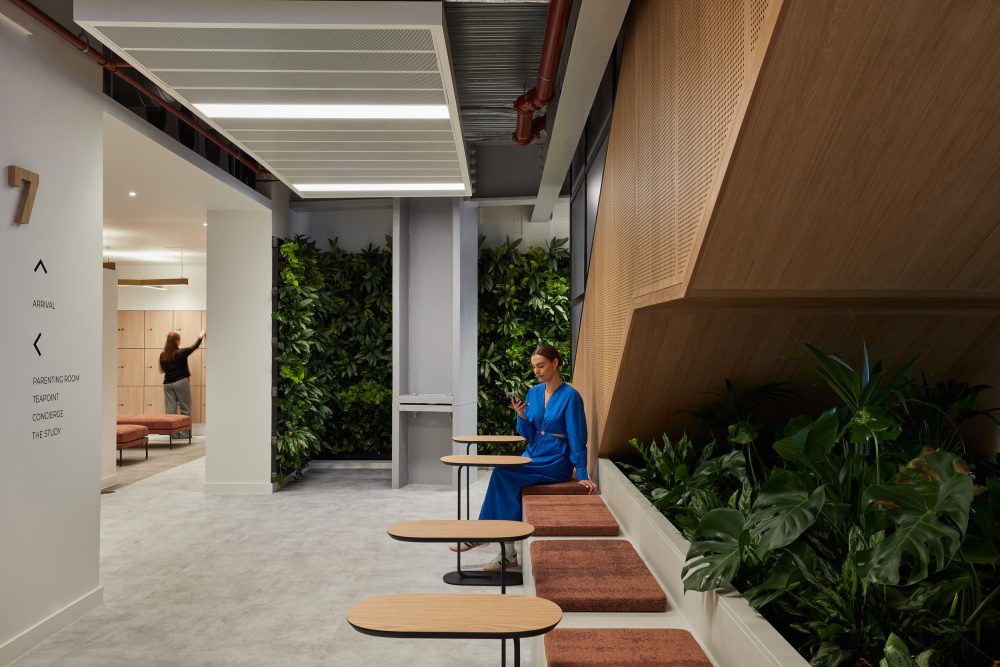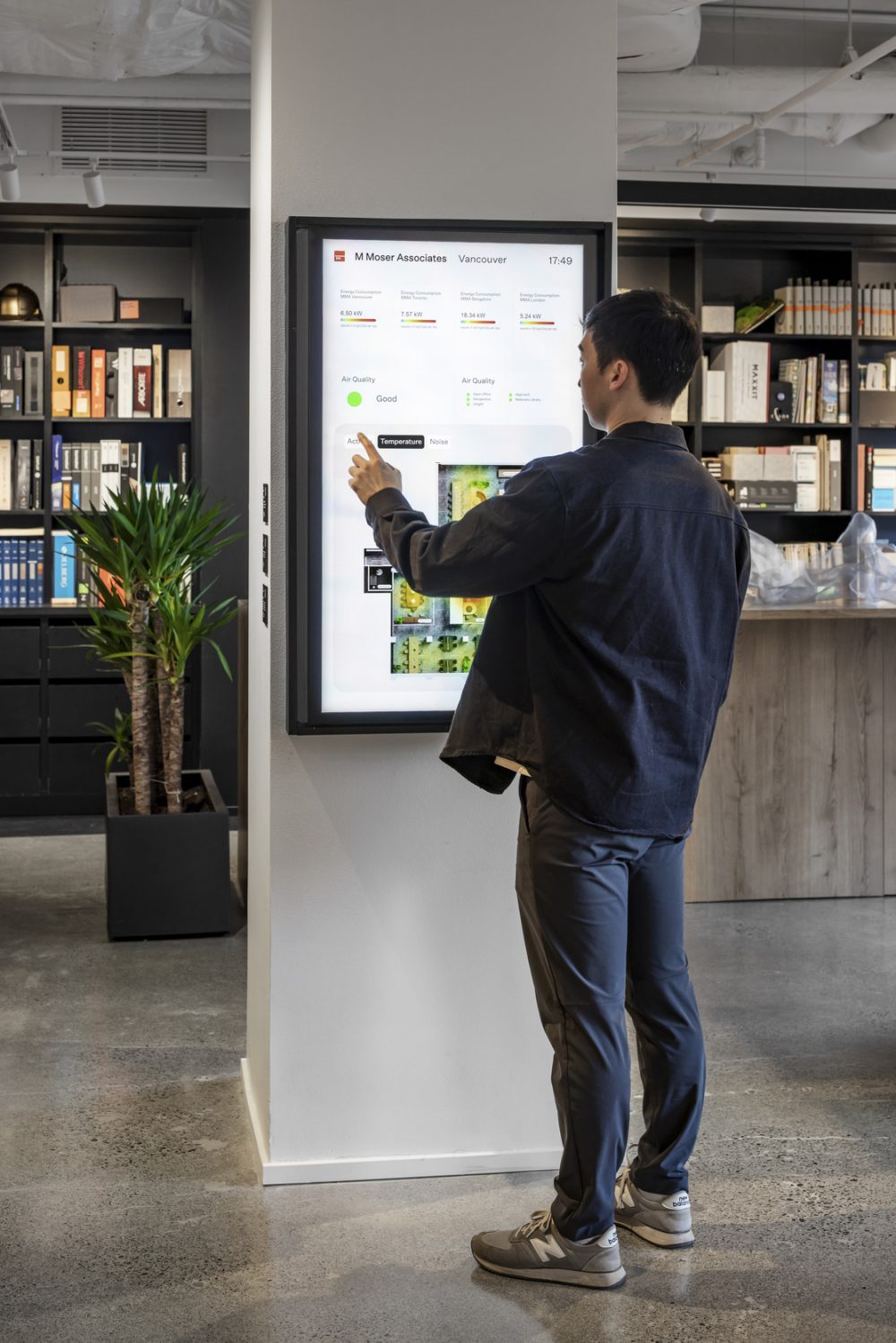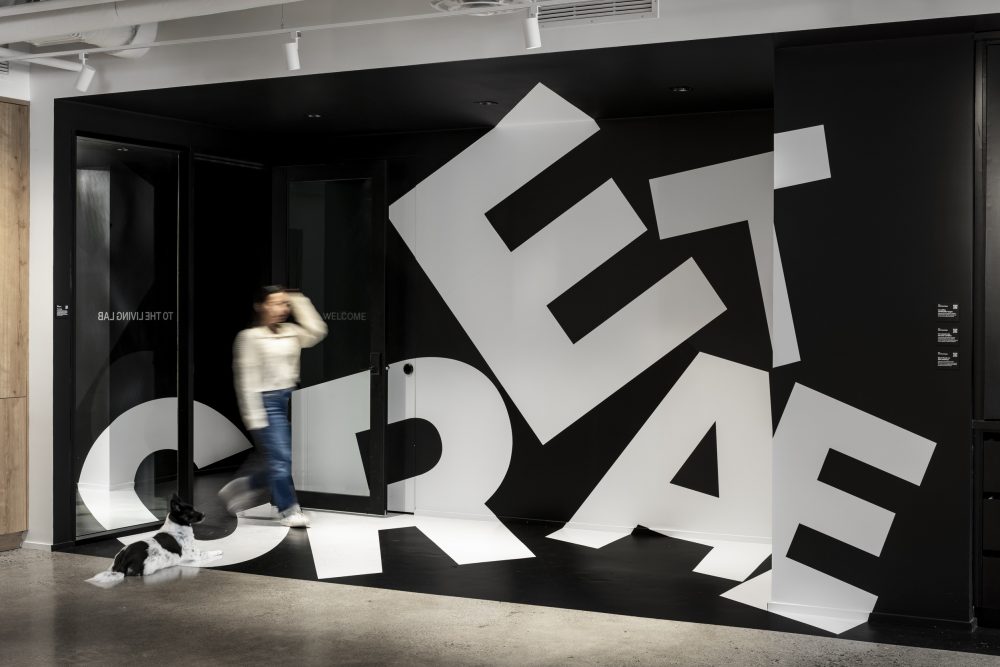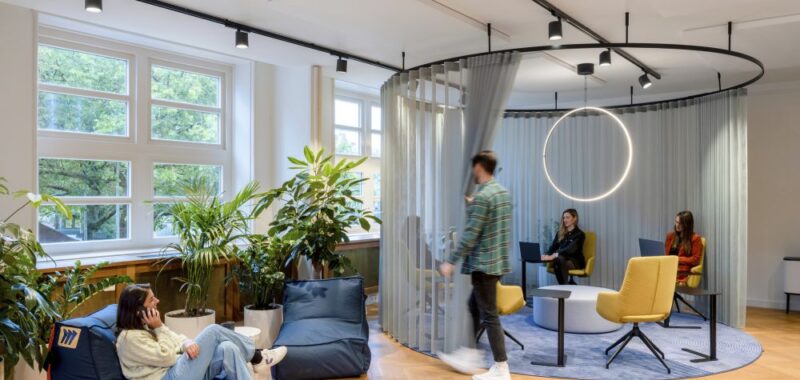Steve Gale, Head of Technology Strategy at M Moser Associates, shares how the invisible aspects of the office are evolving to create digital solutions for three major workplace challenges.
Think of a workplace and you picture an office, a physical thing, a place with furniture and equipment, but there is also a hidden part you cannot see or touch. This is the technology that stores information, software that accelerates production, communication networks and system controls. The invisible workplace.
Technology has grown to be completely indispensable in today’s work environment. While going into the physical office is often optional, most of us would be unable to complete daily tasks without a laptop, phone and internet connection.
The way we combine physical and virtual workplaces will drive future productivity as workplaces become more digital.
Old Technology
For decades, all workplaces have benefited from technology, and some buildings have evolved to become “smart” because occupants can remotely book space or a parking slot, open a locker with their phones and even order food from the cafeteria. They can automatically control lights and air-conditioning to reduce energy consumption and lower sunshades to reduce glare.
Building engineering systems will continue to evolve and become more sophisticated; they are unstoppable, just like the car industry embraced automatic transmissions and electric windows as they became more reliable.
Many so-called “smart” systems are improved versions of old technology, refined to save effort and energy.
New Technology
Some developments are new innovations, not extensions of old technologies. Three notable examples are the Internet of Things (IoT) and related devices, artificial intelligence (AI) with machine learning and the immense processing power offered by cloud computing companies. With these, the gloves are off, and the possibilities are limited only by imagination. In the workplace sector, we have identified three areas where organisations need to help navigate growth and change.

Three big challenges that have become extremely relevant over the last few years have complicated organisations’ lives and made them very uncertain about the future. To resolve these questions, they need high-quality information to make decisions about the future, and this can only come from rigorously analysed, reliable data.
New Challenges
The first new challenge comes from the climate crisis which demands an ethical and legal response from every organisation. We all need to reduce our carbon footprint.
The second is the new set of hybrid working patterns that have emerged since the pandemic. Remote working has dramatically changed the expectations of occupants, and this means radically different space configurations.
The third is the permanent need to attract and retain talent. Although this is not new, most businesses say it has become critical, partly because remote working has given employees a renewed sense of agency and increased expectations about working conditions.

This is where technology can deliver value, when it translates data into insight and actions to tackle the challenges.
The new technologies mentioned above can be put to work to do much more than automate building services or book meeting rooms. The downside is that the skills and knowledge required are not mainstream in the workplace sector.
Digital Twin
One additional piece of software is needed to join the new technologies – a digital twin. This is a bespoke digital repository that stores workplace data in a format that can be used by analysts. A digital twin is a virtual replica of the key parts of a workplace and its systems. The twin describes the condition of the workplace as a dynamic database – not with all the available data, but just the bits you need, continuously growing as data is fed into it.
When you have these elements assembled into an intelligent infrastructure, you have the power to deliver unlimited understanding about your workplace and how to manage it for the future because you have reliable data about the workplace, past and present. It is a supply chain with infinitely adaptable outputs that start with a continuous data stream, stored in a digital twi, and analysed to generate insight.

A Real Example
M Moser Associates recently installed a technology infrastructure for the headquarters of a global bank. This is how it works:
The hardware consists of a permanent array of multi-sensors on each floor which monitor energy consumption, indoor air quality and detailed space occupancy. The system is configured to control services through a building management system (BMS) in a traditional way, but also to stream data into a digital twin which sits on the cloud, and these data are processed to showcase the use and performance of the space, drive the building services, and finally analysed to improve all of the above.
Interactive dashboards installed on every floor provide real-time information about occupancy and environmental parameters, including noise and air quality, allowing users to make their own decisions about where to meet and work. People can call up details of each space, including the available facilities and equipment, and the business can add general information about events and announcements.
Reports are prepared every three months. In them, we analyse the recent data from the digital twin to show how the facilities have been used and make recommendations about reducing energy and carbon emissions, meeting sustainability targets and optimising the space configuration using modelling algorithms that consider evolving work patterns.
This is a SaaS (software as a service) delivery, so the output adapts to demand, and new analytics will be introduced when they become available. New data inputs can be added at the back end, and different analyses can be performed as needed. It is the latest generation of the invisible workplace.


